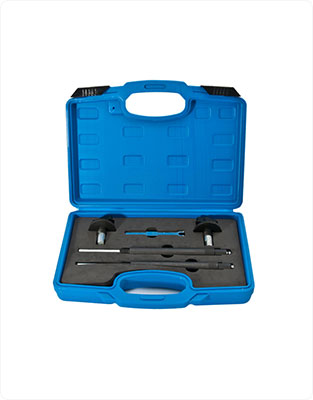The automotive industry is a continuously evolving field, with new technologies and tools being introduced every year. One such development has been the evolution of automotive timing tools, which have become increasingly essential in the maintenance and repair of vehicles. This article explores the history and benefits of these tools, as well as some troubleshooting tips.
Benefits of Using Automotive Timing Tools
When it comes to repairing or maintaining an automobile, accuracy and efficiency are essential. The use of automotive timing tools ensures that these requirements are met, allowing mechanics to perform their jobs quickly and efficiently. These tools ensure that timing components like the camshaft, crankshaft, and other parts are correctly aligned, ensuring that the engine operates correctly. This leads to improved vehicle performance, fewer repairs, and extended engine lifespan.
In addition, the use of automotive timing tools offers an increased level of safety for both mechanics and the vehicle's owners. By allowing technicians to work in a controlled manner, there is less chance of accidental damage to the engine, leading to costly repairs and extended downtime.
The Evolution of Automotive Timing Tools
The evolution of automotive timing tools can be traced back to the early days of the automobile. In the past, mechanics used sprocket-style timing gears and chains to keep the engine's components in time. These early tools were bulky and often challenging to use, making engine maintenance a time-consuming and labor-intensive process.
As technology advanced, new and more efficient timing tools were developed, incorporating computer-aided design and 3D printing technologies. These tools are now more compact, lightweight, and faster, reducing the time required for engine maintenance.
Today, automotive timing tools come in various shapes and sizes, including timing belts, timing chains, and gear-driven systems. They are available for a wide range of vehicles, ranging from small little cars to heavy-duty trucks and buses.
Automotive Timing Tool Troubleshooting
Despite their usefulness, automotive timing tools can sometimes encounter issues that require troubleshooting. One of the most common issues is incorrect timing, which can lead to rough engine performance, reduced fuel economy, and even engine damage.
If you notice these symptoms in your vehicle, get it inspected by a skilled technician who has access to modern automotive timing tools. Engine performance and fuel economy can be restored by using the right tools for the job.
Another common issue is worn-out timing components. A stretched timing belt or a loose chain can cause significant engine damage, leading to costly repairs. Regular inspection of these components with specialized tools like tension gauges or chainsaw files can help prevent this problem.
In addition, it is crucial to keep your timing tools in good condition and replace any damaged or worn parts immediately. Regular cleaning and lubrication will help extend the lifespan of your tools and avoid failure during a critical engine repair.
Automotive timing tools have come a long way since the early days of the automobile. Thanks to significant advances in technology, these tools have become more efficient, versatile, and accurate than ever before. When used correctly, they offer mechanics a vital tool in their daily work, allowing them to work faster and more efficiently while improving the vehicle's overall performance. Regular use of timing tools should occur at least once during the maintenance or repair of your automobile for long-lasting results.
 EN
EN

















